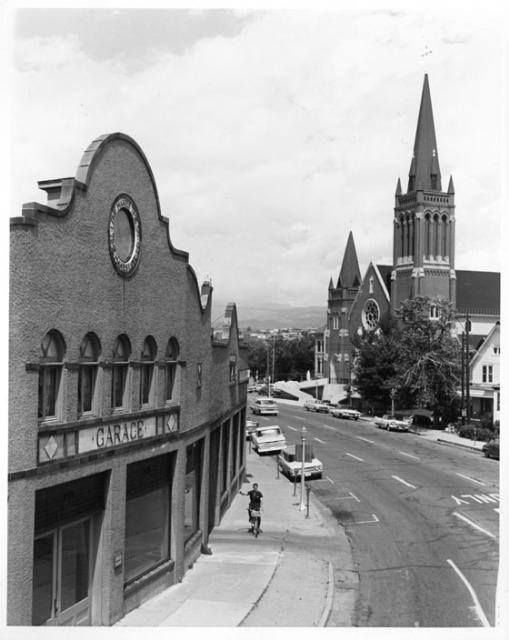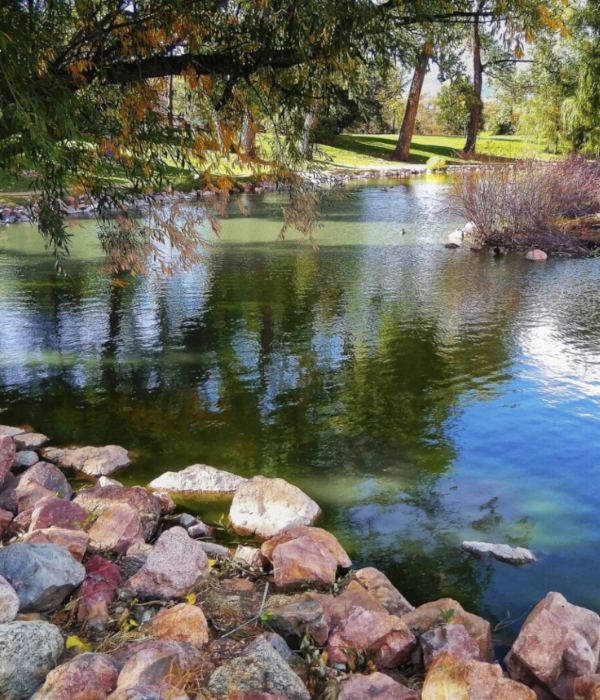
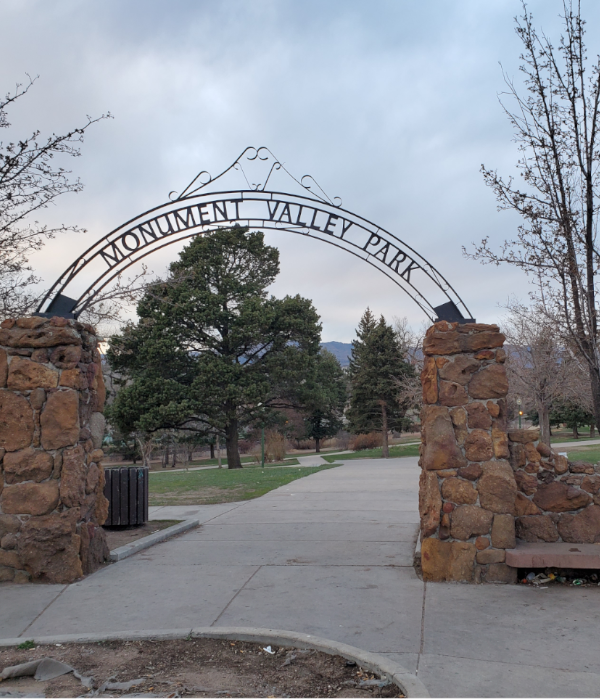
Monument Valley Park runs from Bijou to Monroe along Monument Creek. It forms the western boundary of the Old North End Neighborhood between Uintah Street and Monroe Street and is now a vital link in the completed Pikes Peak Greenway.
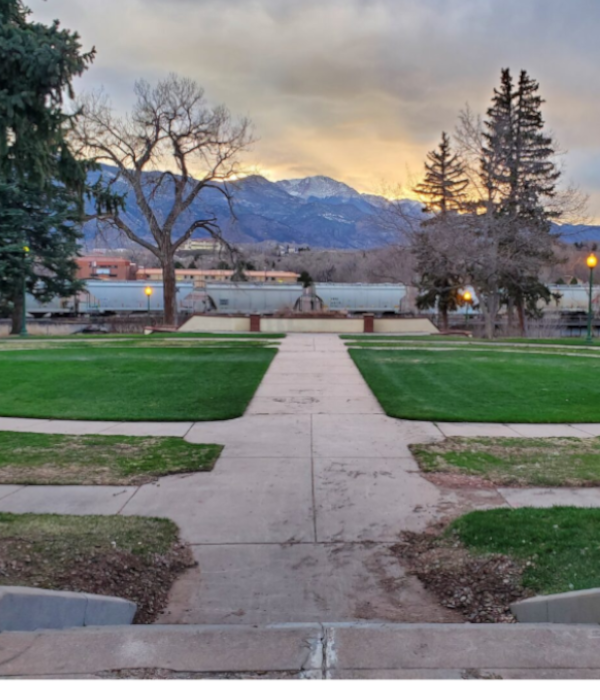



Monument Valley Park runs from Bijou to Monroe along Monument Creek. It forms the western boundary of the Old North End Neighborhood between Uintah Street and Monroe Street and is now a vital link in the completed Pikes Peak Greenway.

Special Thanks to: Cathy Mundy, Pioneers Museum, Water Resources Board
On March 29, 1907, General William Palmer gave to the City of Colorado Springs his greatest gift, Monument Valley Park with all its improvements and equipment. The Park encompassed 164.52 acres with 5.74 acres of lakes and 8.72 miles of graveled walks. The Denver and Rio Grande Railroad right of way provided its Western boundary. Its Southern boundary was from a point 400 feet south of the Bijou viaduct and its Northern boundary to the center line of Monroe Street, a linear distance of 10,950 feet. The population in Colorado Springs at the time was 29,000.
General Palmer’s work of improving the area was completed before the Park was deeded to the City. To his generosity and vision, General Palmer added the engineering skill and wholehearted support of E. C. van Diest who carried out Palmer’s plans. (Van Diest went on to become secretary of the Park Commission.)
An important element consisted of changing the channel of Monument Creek. The new channel of Monument Creek was supported by riprap along the entire length of the channel which in turn was supported at the bottom by a concrete toe wall. The next element of improvement consisted in providing a water system. Near Jefferson Street, a reservoir was built having a capacity of 12,500,000 gallons and readily supplied water from the El Paso Canal (City Ditch). There were four other lakes in the park, all supplied directly from Monument Creek as well as by underground water
General Palmer’s work of improving the area was completed before the Park was deeded to the City. To his generosity and vision, General Palmer added the engineering skill and wholehearted support of E. C. van Diest who carried out Palmer’s plans. (Van Diest went on to become secretary of the Park Commission.)
An important element consisted of changing the channel of Monument Creek. The new channel of Monument Creek was supported by riprap along the entire length of the channel which in turn was supported at the bottom by a concrete toe wall. The next element of improvement consisted in providing a water system. Near Jefferson Street, a reservoir was built having a capacity of 12,500,000 gallons and readily supplied water from the El Paso Canal (City Ditch). There were four other lakes in the park, all supplied directly from Monument Creek as well as by underground water
To provide the park with flowers a greenhouse was built just north of the Mesa Road, and it has supplied plants each year since its construction. (A new greenhouse was dedicated in 1999).
The lakes were used for skating in winter and one lake was designed as a wading pool for children. Sand courts and swings were provided along with a tennis court near Uintah Street which still stands. At the South end, just north of Bijou viaduct, a small tract was set aside for the cultivation of as many varieties as possible of native wild flowering plants and shrubs, General Palmer’s Colorado Wild Garden.
The park was entirely fenced with many entrance and exit points along its length.
General Palmer felt that as the Monument Valley Park was situated in the City and extended for nearly two miles through it, that more provision be made for the amusement of young and old. He wanted the Park to be popular, a source of instruction as well as a safe and healthful resort and playground. He had many plans for improvement of various areas of the Park, including pavilions, more tennis courts and playgrounds. He was concerned about lighting in the Park and made plans to provide and improve it.
General Palmer, in deeding this wonderful tract to Colorado Springs, did have a few conditions placed on the deed. They were as follows:
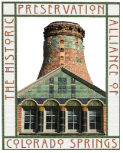
Our member supported non-profit organization has grown over the past 25 years since our launch in 1999 to become the leading voice for historic preservation in the Pikes Peak region through advocacy, education, events and strategic alliances.
If one of these membership amounts aren’t what you’re looking for, just pick the amount that works for you and still become a friend of HPA.
Thank you for supporting The Historic Preservation Alliance!
